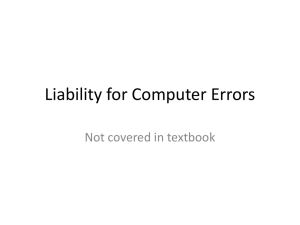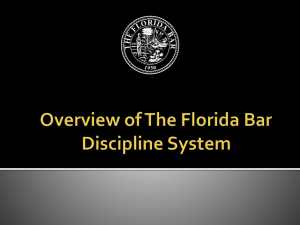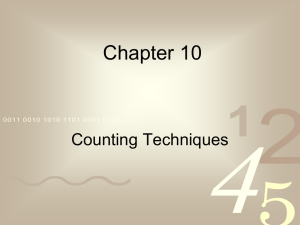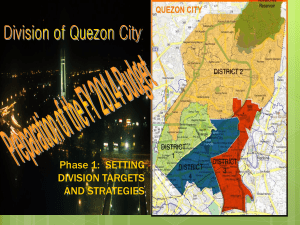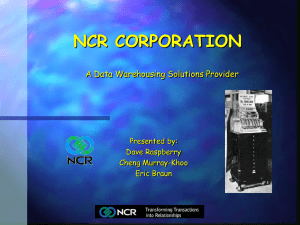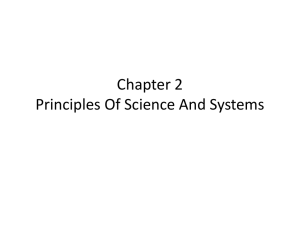What is an NCR?
advertisement
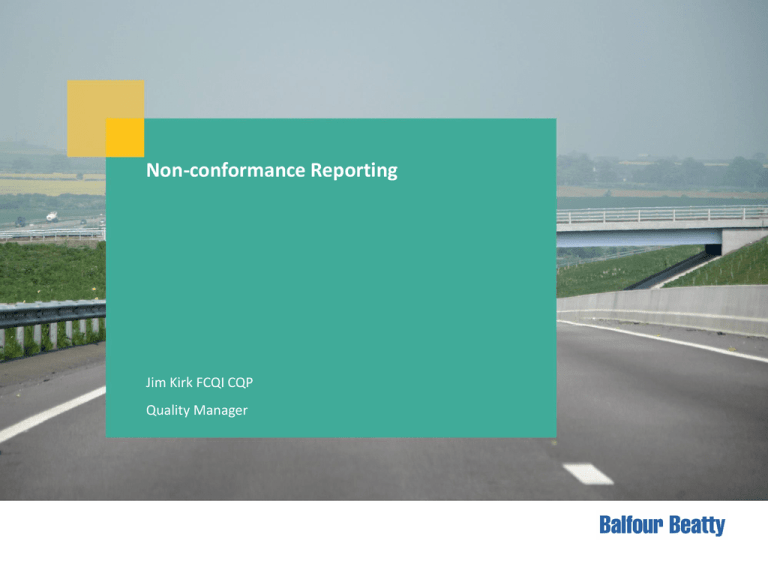
Non-conformance Reporting Jim Kirk FCQI CQP Quality Manager Annex 24 2 HA Network Map 3 HA Area 4 Map 4 What is an NCR? • A report issued when a product, process or procedure does not comply with the set standards for a product, process or procedure under inspection • An NCR is any significant deficiency • A means of tracking actions • A tool to put right things that are going wrong • A means of stopping repeated errors • NCR’s are used to record findings from internal and external audits that require addressing • NCR’s are usually raised from within a process team relating to their inputs received as outputs • Accumulating data from across the organisation and reporting in a consistent way will enable you to identify non-conformance trends before they seriously affect the business. 5 What isn’t an NCR? • Trivia • A tool to “get your own back” • Somebody’s opinion as to something going wrong when it is not actually a requirement There is a Procedure For Non-conformance! Area 4 > Area 4 Document Centre > Procedure Documents 6 On-line NCR System 7 Raising NCR’s 1. Copy from the process, procedure, form, template or other document, the instruction as to what needs to be done 2. State what is wrong and how it doesn’t match what is required 3. If you cannot find the written requirement, ask yourself if this is really a non-conformance? Activity: Copy from one of these To the Activity box on the NCR form Parts 2 & 3 Fix the problem • Complete the form correctly • Sign the form • Re-draw the As-built • Close the scheme • Provide the missing document Ask the 5 why questions • Why didn’t he do it? • Why didn’t he know he was supposed to do it • Why wasn’t he trained • Why wasn’t the requirement specified • Why wasn’t there enough resource to do the work 9 Enter a realistic date Decide who the correct person is and speak to him/her Enter the root cause after answering all these questions Having worked out the root cause, the action to prevent recurrence is obvious Enter a realistic date Decide who the correct person is and speak to him/her N.B. The Quality Action Management Owner should Points have awarded if the working discussed withday the7actionee deadlinebefore missed - from observation approval. It isdate difficult not NCR to change raised afterwards date BS EN ISO 9001:2008 Records of the audits and their results shall be maintained (see 4.2.4). The management responsible for the area being audited shall ensure that any necessary corrections and corrective actions are taken without undue delay to eliminate detected nonconformities and their causes. 10 BS EN ISO 9001:2008 8.5.2 Corrective action The organization shall take action to eliminate the causes of nonconformities in order to prevent recurrence. Corrective actions shall be appropriate to the effects of the nonconformities encountered. A documented procedure shall be established to define requirements for a) reviewing nonconformities (including customer complaints), b) determining the causes of nonconformities, c) evaluating the need for action to ensure that nonconformities do not recur, d) determining and implementing action needed, e) records of the results of action taken (see 4.2.4), and f) reviewing the effectiveness of the corrective action taken. 11 BS EN ISO 9001:2008 8.5.3 Preventive action The organization shall determine action to eliminate the causes of potential nonconformities in order to prevent their occurrence. Preventive actions shall be appropriate to the effects of the potential problems. A documented procedure shall be established to define requirements for a) determining potential nonconformities and their causes, b) evaluating the need for action to prevent occurrence of nonconformities, c) determining and implementing action needed, d) records of results of action taken (see 4.2.4), and e) reviewing the effectiveness of the preventive action taken. 12 There is a Procedure for Corrective Action! Area 4 > Area 4 Document Centre > Procedure Documents 13 Benjamin Franklin's 5-Why Analysis For want of a nail a shoe was lost, for want of a shoe a horse was lost, for want of a horse a rider was lost, for want of a rider an army was lost, for want of an army a battle was lost, for want of a battle the war was lost, for want of the war the kingdom was lost, And all for the want of a little horseshoe nail. 5 Why Questions 1. Why was the Kingdom lost? Because the war was lost. 2. Why was the war lost? Because the battle was lost. 3. Why was the battle lost? Because the army was lost. 4. Why was the army lost? Because the rider was lost. 5. Why was the rider lost? Because the horse was lost. 6. Why was the horse lost? Because the shoe was lost. 7. Why was the shoe lost? Because the nail was lost 8. Why was the nail of the shoe lost? .............................? 15 Notes on Root Cause Analysis Difficulties in tracking down the root causes Where do you draw the line? At the Joint Venture? At the Parent Company? At the Client? At the Regulator? At the Big Bang – creation of the universe? What are the stop rules? There are no natural break-points, only artificially imposed ones. The goal is to establish what happened and how to stop it happening again. The logical stop point would seem to be where managers might reasonably be expected to exercise control A sad story will help to illustrate this point 16 Chernobyl Academician Valeri Legasov was the principle investigator of the Chernobyl reactor disaster. He was also the Soviet Union’s chief spokesman at the international conference on this accident. At this meeting Legasov put the blame for the disaster squarely on the errors and violations of the operators. Later he confided to friends, ‘I told the truth at the conference, but not the whole truth’. Two years later he hanged himself after recording his innermost feelings about the accident to a tape recorder. 1 After being at Chernobyl, I drew the unequivocal conclusion that the accident was ... the summit of all the incorrect running of the economy which had been going on in our country for many years.2 1 Managing the Risks of Organisational Accidents – James Reason, Ashgate Publishing ISBN 978-1-84014-105-4 2 This quotation is taken from the Legasov Tapes, a transcript prepared by the US Department of Energy in 1988. The original material appeared in Pravda shortly after Legasov’s death. 17 An alternative method of root cause analysis 18 What was supposed to happen? • ________________________ • ________________________ • ________________________ • ________________________ • ________________________ • ________________________ Why was there a difference? • ________________________ • ________________________ • ________________________ • ________________________ • ________________________ • ________________________ What actually happened? (and did we get hurt?) • ________________________ • ________________________ • ________________________ •________________________ • ________________________ • ________________________ What have we learnt? Plus actions • ________________________ • ________________________ • ________________________ • ________________________ • ________________________ • ________________________ Fish-bone analysis to find root cause Main Factor 1 Main Factor 2 Probable cause 1.2 Probable cause 1.1 Probable cause 1.3 Main Factor 3 Probable cause 2.1 Probable cause 3.1 Probable cause 3.2 Probable cause 2.2 Problem Probable cause 4.1 Underlying cause 4.1.1 Probable cause 4.2 Probable cause 6.1 Underlying cause 4.2.1 Probable cause 5.2 Probable cause 6.2 Probable cause 5.1 Main Factor 4 19 Main Factor 5 Main Factor 6 Underlying cause 6.2.1 Worked example of fishbone analysis Lack of recognition Procedures Employees expected to perform tasks that reduce time spent on customer service Management not sensitive to employee concerns Inadequate training People Low pay Employees not motivated Supervisor assigns unrealistic workload Employees rude to customer Provide quick service to customers Equipment Policies Customer is always right Etc. 20 Etc. Bend the rules to satisfy customer Etc. Acceptance I will not accept inadequately completed forms, missing information etc Rejected forms will return to Parts 2 and 3. At that point the names of the actionees can be changed if needed If I think 2 & 3 are reasonably ok, I will put further guidelines in the comments box 21 Closure • The Closure must be completed in full • all the evidence must be uploaded to the three sections • Include hyperlinks as a last resort (they may move or be deleted) • Highlight the word for example Click Here • Press Ctrl K • Paste the web address into the pop-up menu 22 Closure Approval • I will not close out the NCR if the evidence is not provided or the action to prevent recurrence is not adequate • The Local Process Owner is required to sign off the NCR to indicate that he / she is satisfied that the actions are suitable and to understand that the NCR may need to be included in the process review input 23 Further Training Available - 1 24 Further Training Available - 2 25 Any Questions? Comments? Other Concerns? 26 27 28 29 30 31 32 33 34

